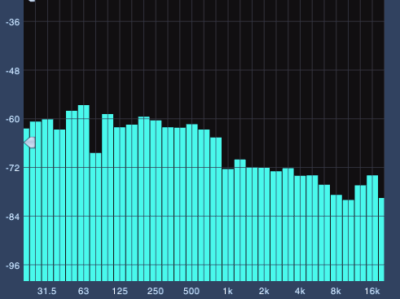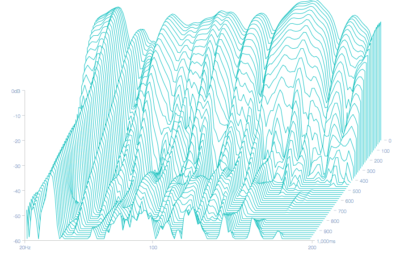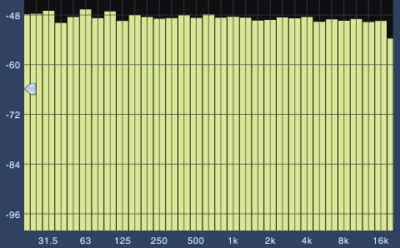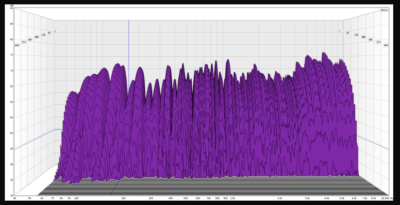How to Turn Your Production Space Into an Accurate Mix Room: The Science and Seven Tips
You know how to get creative in your production room. From beats to ballads, the new sounds flow.
Once you’ve got the songs down, it’s a logical next step to start mixing on the spot, right? Wait–not so fast.
You think your production room is also a mixing room, but size and shape matter for nailing mixes that translate.
SIZE MATTERS
First off, let’s look at size. True mix rooms need to be 3300 cubic feet of space or more, and should be a proper proportion with a minimum of 11-foot ceilings.
Why is that? As both a mixer and studio designer, I’ve seen this again and again first-hand: Once room size becomes smaller than 3300 cubic ft, sound waves in the lower frequency range within the room start to clash with each other in an out of phase formation, and create standing waves that are very hard to correct.
The reverb time of the room is important and balancing the frequencies within the reverb time can be crucial. For a great explanation on rt60 reverb time check out:

An RTA (Real Time Analyzer) reading utilizing pink noise of a small untreated room would look something like this:
An RT60 reading of a small untreated room will look something like this:
A small square room–and a lot of production rooms fit this description–is the worst possible scenario for a mix room. Small square rooms yield the most problems acoustically. When a room has the exact same size and distance between walls throughout, the problem frequency per wall is the same a.k.a. modal resonances. By having the same problem frequency throughout, the issue is compounded and that problem frequency has now grown into a problem that can be hard to solve.
As a result, square rooms make it hard to get a flatter response, which goes hand in hand with sonic accuracy. So if you’re looking for a space to build a room from scratch, make sure your room is rectangular. A rectangular room with the right proportions spreads the modal resonances so that they don’t compound the problem.
REVERB TIME OF YOUR ROOM
Why do we need a flatter response? A “flatter response” of a room would be having an RT60 (reverb time) measurement of the room that is equal throughout all frequencies—RT60 is a measure of how long sound takes to decay by 60 dB in a space.
Also having the RT60 of the room be between .3 to .45 is a measurement to shoot for. A room with an RT60 reading of .3 throughout all the frequencies will be considered a great critical listening mix room and mastering room. A .45 RT60 reading would be considered a more musical listening room, but not necessarily a great mixing/mastering room.
The size and shape of the room matters as much as the size and shape of your speakers or even your acoustic instruments. Understanding that your room is indeed an instrument, and that your room needs tuning just an acoustic guitar needs tuning will allow you to have a better grasp as to why having a flatter response in a room matters so much. In order to make an accurate judgment regarding instruments and vocal placement in a mix, EQ, compression, etc…, a mix engineer must completely trust that the room and speakers are telling the truth. When a room has a flatter response, the speakers will also have a flatter response. Therefore, your decisions will be more accurate.
In my many years of jumping from one mix room to the other, I found the inconsistencies from room to room to be sonically enormous. Even though I would bring my own monitors to listen to, it didn’t matter — the accuracy of my mixes in many rooms could still be difficult to judge. Finding rooms that were flatter became a priority for me, and tuning the speakers with a room EQ would help me to improve their performance as well.
Let’s face it: If your room is lying then what you think you are hearing is false. Hence a faulty mix.
Intricate Frequency Synchronization Within a Multi-Dimensional Space
As noted above, production rooms tend to be much smaller in size. They’re great to create and edit in but mixing in one can be misleading unless certain measures have been taken.
Now, size of the room isn’t the only difference. Room proportions, acoustic treatments, placement of speakers and their tuning is just as important.
If you like your production room you may very well be asking at this point, “Can a production room be treated to respond more like a mix room?” Actually, yes, it can be treated properly to improve the mixing experience.
Here are a few tips and tricks to make your small production room behave more like a big mix room:
Most smaller rooms that have monitors up against the wall, that haven’t been adjusted, usually produce sound that is inaccurate. Placing speakers away from walls by at least 1.5 ft from front and side walls can make a big difference. Also keep in mind that symmetry of speaker placement can greatly increase a more accurate stereo image.
For more information on this topic, I would suggest checking out this recent video by Justin Colletti of SonicScoop who does a fantastic job of explaining speaker placement:

Bass traps. The biggest problem that often needs to be solved is the low frequency in a small room. Adding bass traps in the room will greatly increase the accuracy of the room. Check out this example.
RFZ Panels. Reflection Free Zone panels placed on the sides and ceiling would clear up reflections in the sweet spot (mix position).
Diffusion, diffuser panels. Adding these to the room will also create a clearer stereo image and help you to hear the actual depth of a mix and what your reverbs are actually doing.
Have two subs. Dual subwoofers can be utilized to enhance near fields to create a more accurate lower frequency response. Instead of considering the subs to be there to enhance the low end, one should think of the subs as a more accurate representation of the lower frequencies and that they act as a completion of the system—not an enhancement. For example, if your nearfields are considered two-way systems, then adding a sub per speaker would turn them into a three-way system.
Room EQ. Utilizing a room EQ to match not only the gain per speaker, but also correcting some of the colorization that the room fingerprint adds, helps tremendously. Here are honorable mentions of applications that can be used for measurements: 1. Room EQ Wizard, FuzzMeasure, SMAART.
Secret tip! Adding a few skyline diffusers on the floor near the speakers can really open up the imaging. We use this technique all the time and it works! Many people overlook the fact that a floor in the studio is another surface that can cause problems and that treatment of the floor is just as important. Visit here for a great description of diffusion.
By the time you’re done with all of the above, your room should ideally have readings such as the picture below:
Some engineers and producers like a bit of a musical curve (Harmon Kardon curve or the JBL curve) but the above, somewhat flat, response is a great start.
Follow the above tips, and your production room just might become a true double threat! If you’d like to customize your room, have questions or if I can help further, don’t hesitate to get in touch at humungismusic@gmail.com or visit me online.
Please note: When you buy products through links on this page, we may earn an affiliate commission.












[…] You think your production room is also a mixing room, but Read more… […]